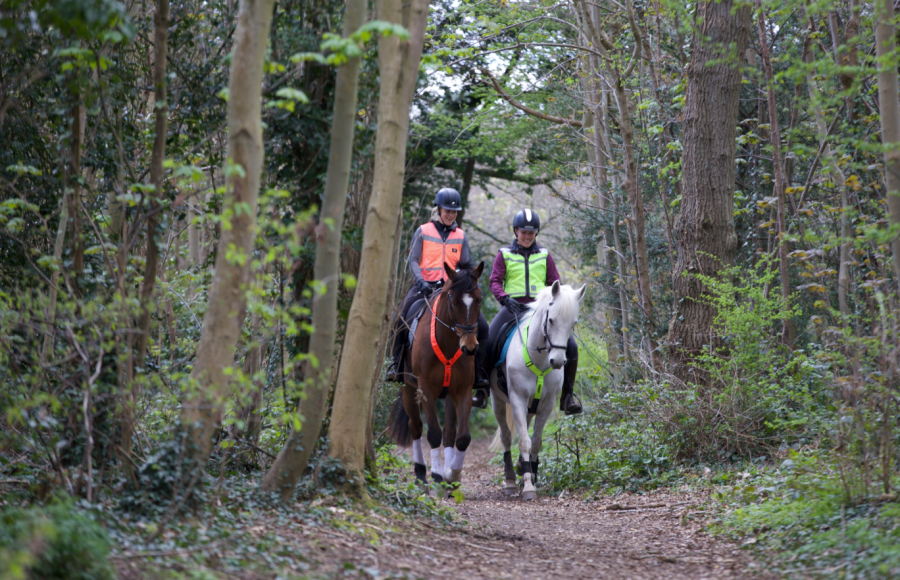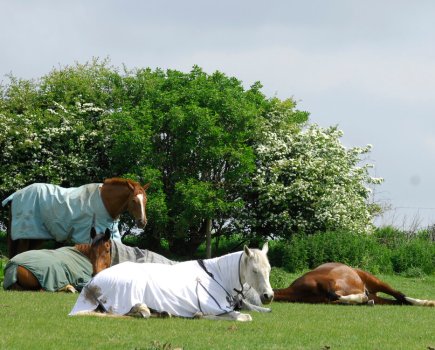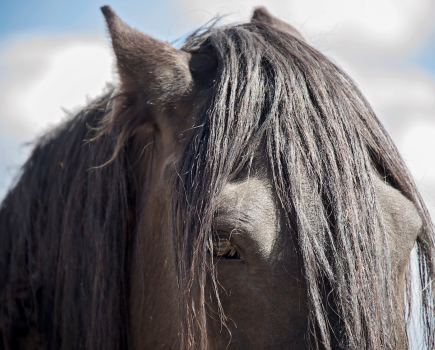Providing a balanced and nutritious diet is just as important for a hacking horse as any other equine, and as you clock up your #Hack1000Miles, you’ll want to make sure they are fuelled correctly to remain fit, healthy and happy. Baileys Horse Feeds explains how to fuel your charge correctly, ensuring you accurately assess their workload so you can calculate their feeding needs.
Nutrient requirements increase with workload and even when you’re “just” hacking, you want your horse to have the energy to enjoy your ride and the nutritional support to recover well ready for the next one. A first step in ensuring a horse’s diet is meeting his requirements is to explore how much exercise they are currently getting.
In the UK, the National Research Council (NRC) has calculated horses’ minimum nutrient requirements, according to bodyweight and differing work intensities. It is these scientifically determined nutrient levels that feed manufacturers work to when formulating feeds, and so it makes sense to have a look at how the NRC defines light, moderate and hard work (see charts, below).
Assessing work load
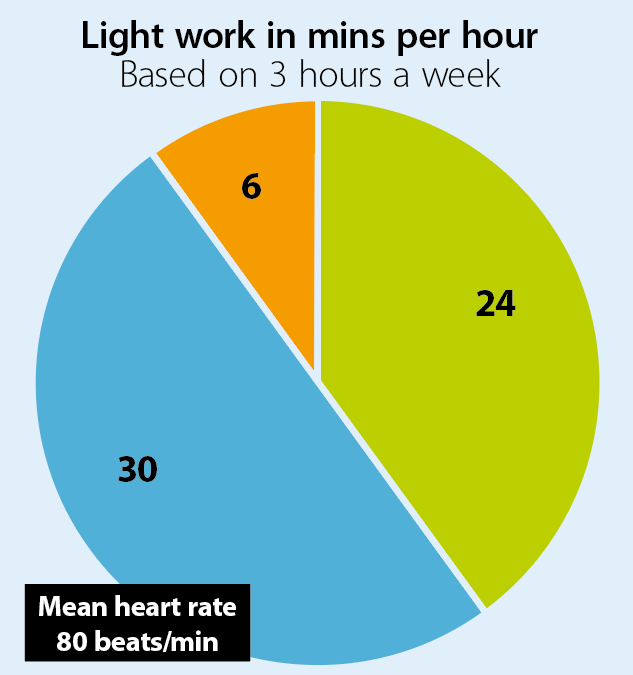
Your Horse Library/Geoff Johnson Design
A horse in light work is considered to do between one and three hours of work per week. That could be up to three one-hour hacks, four 45-minute hacks or five 35-minute hacks. These may be made up of approximately 40% walk, 50% trot and 10% canter.
Over a week, that works out at up to 72 minutes walking, 90 minutes trotting and up to 18 minutes cantering. This equates to 24 minutes walking, 30 minutes trotting and six minutes cantering per hour.
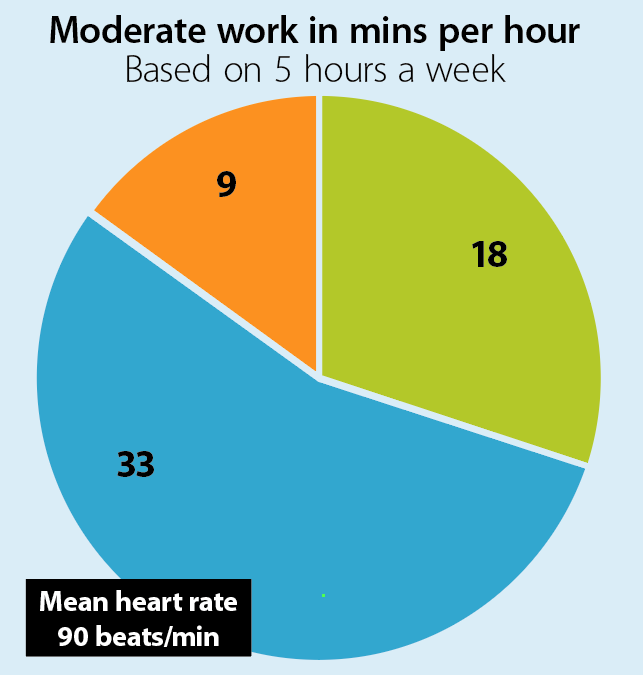
Your Horse Library/Geoff Johnson Design
A horse in moderate work does between three and five hours work per week, made up of approximately 30% walk, 55% trot, 10% canter and 5% low jumps or pole work. For those who don’t jump, this can be divided between the trot and canter percentages.
This could mean five one-hour hacks per week or six 50-minute hacks — assuming horses have one day off per
week — and would mean doing 18 minutes walking, 33 minutes trotting and nine minutes cantering per hour.
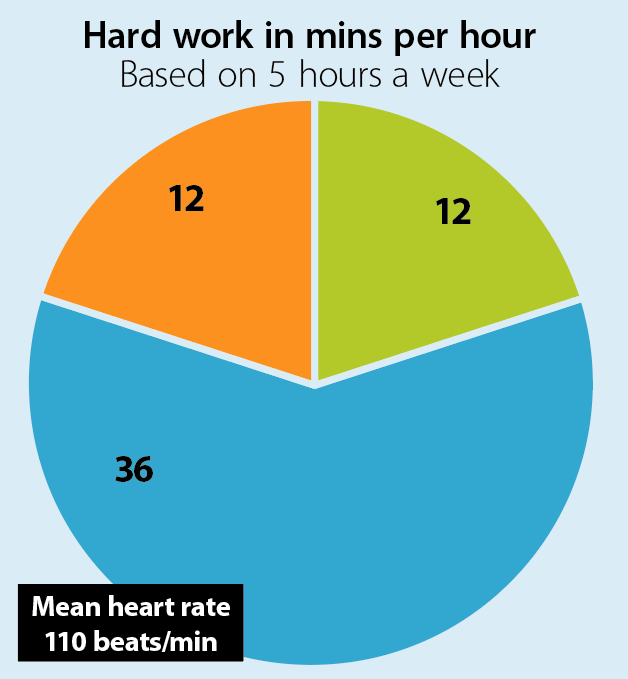
Your Horse Library/Geoff Johnson Design
A horse in hard work is doing between four and five hours per week made up of around 20% walk, 50% trot, 15% canter, 15% galloping and jumping. This works out at around 12 minutes of walk, 36 minutes at trot and 12 minutes of cantering per hour.
The NRC also classifies very hard/heavy work, which really only applies to racehorses and elite event and endurance horses.
NB These workload definitions are only guidelines and your horse may not fall exactly into one level
Increasing requirements
The important point when assessing workload is to be as realistic and objective as you can and avoid over-
estimating. If you spend more time in the saddle this summer and your horse works harder, you’ll probably need to adjust his diet accordingly.
The largest proportion of their diet will be pasture and/or forage, and for many horses these alone can meet, or even exceed, their calorie requirements. Bear in mind that any calories not used to fuel work and maintain health and wellbeing will be laid down by the body as fat.
Dietary protein supplies the amino acid building blocks for muscles and other tissues like tendon and bone, so is
important for building and maintaining muscle and top line. These requirements will increase with workload.
It must be provided at appropriate levels and be of good enough quality to supply certain essential amino acids. Feeds which are formulated for harder workloads include protein sources, like soya, with the necessary amino acid profile to meet the increased requirements for ongoing tissue repair, as well as building muscle and top line.
Releasing energy
Vitamins and minerals are equally important and so often overlooked. Zinc and manganese, along with B vitamins, are involved in metabolism and the release of energy from the diet, while others, like selenium and vitamin E, have antioxidant properties and help mop up potentially damaging free radicals. Free radicals are produced during metabolism and their production increases with workload.
Vitamins and minerals are also important components of strong hooves, healthy skin and other tissues, so any
deficiency can have many implications.
Research is increasingly identifying that forage and pasture lack key essential nutrients, particularly protein and
certain minerals. This means supplementary feed is necessary, even for the resting horse.
For those whose calorie requirements are met by grass and/or forage alone, a low-calorie balancer is ideal for providing what’s lacking. Choose one that’s formulated for your horse’s current workload and feed according to the manufacturer’s recommendations for bodyweight and workload.
If you’re planning to increase your horse’s workload by going for longer hacks or you’re aiming for pleasure rides, you can either follow the guidelines on the bag and feed more of your existing balancer or switch to one which is designed to support heavier workloads.
Extra calories
Some horses do need more calories than forage and/or grass can provide. Mixes and cubes are formulated to provide these additional calories, along with other nutrients, to achieve a fully balanced diet when fed at recommended levels alongside forage.
As you increase workload, you may need to change you mix or cube to one that’s designed to meet the extra calorie and nutrient requirements. You must feed recommended levels to provide a fully balanced diet.
If you feed less than the recommended amount, the diet will fall short on protein, vitamins and minerals. Topping the reduced amount up with a balancer is a great way to make sure the diet is balanced again.
Likewise, you may prefer to stick with a lower-energy mix or cube designed for lighter workloads, even though your horse is working at a moderate or hard level. Again, even if calorie levels are sufficient other nutrients will not be, so top up with a balancer.
Lead image by Your Horse Library/Charlie Gooders Photography

